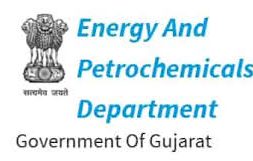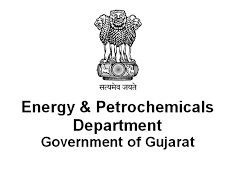
Green hydrogen can boost India’s energy security, decarbonisation of economy – EQ Mag Pro
India is anticipating that 80-85% of the country’s electricity demand will be met from renewable sources by 2050.
India has taken bold steps towards meeting its Paris Climate Change (COP21) commitments and exponentially increasing renewable energy capacity. India has already achieved emission reduction of 28% over 2005 levels, against the target of 35% by 2030 committed in its NDC (nationally determined contributions).
India is anticipating that 80-85% of the country’s electricity demand will be met from renewable sources by 2050. India ranks fifth globally in installed solar capacity now. Renewable sources contribute one-fourth of the total capacity here.
Climate change is a global phenomenon but with local consequences. The recent floods, earthquakes and erratic rainfall are evidence of the unpredictable damages to human lives, businesses, and private and public properties.
The Government under the leadership of Prime Minister Narendra Modi has taken an ardent strategy to move away from dependence on fossil fuels to renewable sources progressively. Economic activities adhering to cleaner sources of energy would have a positive impact on protecting the environment and minimising havoc created by climate changes. Mr Modi is one of the global leaders who paid heed to climate change and has taken ambitious pro-active steps.
India would require international financial support and transfer of technology to up the ante to make renewable sources fuel the country’s economy. Though significant progress has been made, it requires a more equitable share between different stakeholders to race ahead. During a visit, John Kerry, US Special Presidential Envoy on Climate, noted that the United States would support India’s climate plans by facilitating affordable access to green technologies and requisite finance.
Addressing the nation from the ramparts of the Red Fort on Independence Day, Mr Modi reiterated that hydrogen is the future fuel of the world. He announced the setting up of the National Hydrogen Mission with the aim of India becoming the new global hub of hydrogen and also its largest exporter.
This is testimony to the fact that we have to make the economy green at a faster pace. A recent Air Quality Life Index report from the University of Chicago showed that a person’s average life expectancy living in the national capital has been reduced by 9.7 years by not meeting WHO norms.
India’s entire 130-crore population lives in areas where the annual average particulate pollution level exceeds WHO guidelines. Since 1998, the average annual particulate pollution has increased by 15%.
Green hydrogen can help solve India’s twin problems — energy security and decarbonisation of its economy. It can be produced through the electrolysis of water using renewable electricity to generate hydrogen and oxygen.
The cost of green hydrogen can be at parity with blue and grey hydrogen and will further reduce owing to increased scale, demand and advancement of technology. The country needs a policy that promotes competition and innovation with participation from the private sector. It is noteworthy that Government policies will drive the initial demand. Post that, as more capacities are being built, the product becomes popular and customers accept it.
To emerge as an exporter and global hub of green hydrogen, India needs to compete with producers across Australia, the Middle East and South America. For instance, Australia has 10% more solar irradiance, the Middle East has 20% more and South America has 30% more irradiance compared to India. To become a global hub, we need a policy that allows competing with these three geographies. We can look at our tax, various logistic costs and all possible regulations to make it so friendly that the advantages of those countries in terms of higher irradiance can be compensated.
The Prime Minister has paved the road ahead for green hydrogen usage in India. The need of the hour is a nimble but high-powered committee to drive the National Hydrogen Mission. Green hydrogen can be utilised not just for grid-scale storage solutions and feedstock for ammonia but can play a bigger role in long-distance transportation. This entails several departments of the Government coming together to offer a conducive environment for participation from the private sector, as well as a platform to fuel innovation through continuous research and development.
All major economies in the world have put up their strategies around green hydrogen. Green hydrogen, produced from renewable sources, plays a crucial role in low-carbon development. It can substitute fossil fuels used in industries including fertilisers, chemicals, petrochemicals, refineries and steel units. In India, a chunk of hydrogen is utilised in the refining and production of ammonia, which is a base material for urea and other complex fertilisers. Currently, this hydrogen requirement is met from burning fossil fuels.
Kickstarting a small share of green hydrogen to substitute grey hydrogen can create a substantial market. Gradually, with the economies of scale and innovation green hydrogen could become a competitive fuel.
Globally, technologies are evolving to make the production of green hydrogen cost-effective. The need of the hour is a transparent mechanism of competitive bidding to arrive at the lowest possible price of green hydrogen.

















